The Majestic Stone Lion in Hamadan
The Stone Lion of Hamadan, known as Shir Sangi in Persian, is a remarkable relic from Iran’s rich historical tapestry. Perched on a hill in Hamadan, this imposing sculpture is a vestige of the ancient 'Lions' Gate,' which once stood as a grand entrance of the city of Ecbatana in Persia. Originally, two majestic lions flanked the old gate, symbolizing strength and protection.
The significance of this stone lion dates back to the Islamic conquest of Persia, when the victorious Arabs dubbed the gate bâb ul-asad, meaning "the lions' gate." The gate, and its lion statues, were demolished in 931 AD following the Deylamid conquest of the city.
Historical accounts reveal that the Deylamid leader Mardāvij attempted to transport one of the lions to Ray but failed, leading him to order the destruction of the statues. One lion was reduced to rubble, while the other, partially damaged, remained on the ground for centuries.
In 1949, restoration efforts revived the damaged lion, which was later examined by Heinz Luschey in 1968. Luschey's research linked the lion to Hellenistic art and suggested that it might have been commissioned by Alexander the Great to honor his companion Hephaestion.
Today, the Stone Lion of Hamadan stands as a testament to the city’s ancient grandeur and a fascinating link to its storied past. Join us to learn everything about the stone lion statue including its history, features and present day location.
Why Visit the Stone Lion Statue in Hamedan?
- Walking around the stone lion square gives you a sense of traveling back to ancient times.
- The square is a green, open space perfect for strolling, relaxing, and spending time with family and friends.
- It’s an ideal location for a picnic and enjoying outdoor meals.
- The statue is a great subject for photography, offering various angles for unique shots.
- Throughout the year, various events and festivals are held at the square, adding to its appeal.
About the Stone Lion of Hamadan
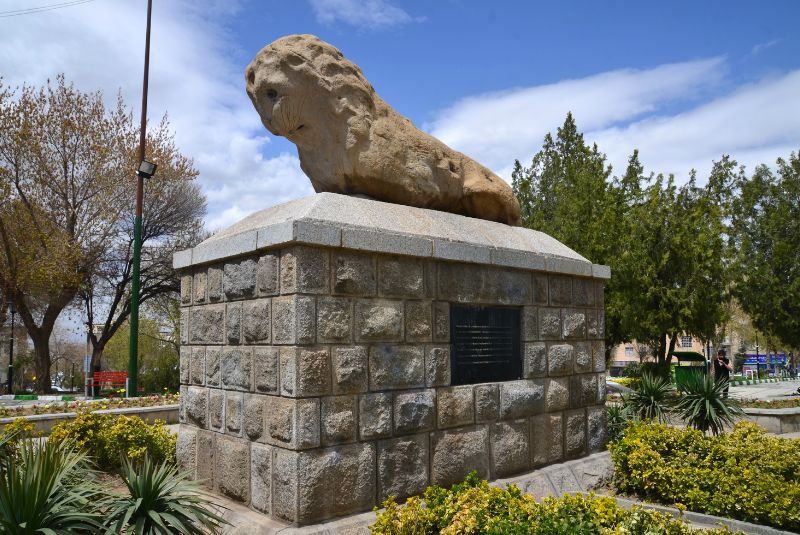
The Stone Lion of Hamadan is a striking relic from ancient history, located at the end of Stone Lion Street, in the center of a square bearing the same name.
It was registered as a national monument of Iran on January 5, 1931 and this impressive statue stands atop an ancient mound. The mound itself has historical significance, as an Achaemenid-era coffin was discovered there and is now housed in the Hamadan Museum.
Originally part of the Ecbatana city's gate, the Stone Lion, along with its twin, was constructed to protect the entrance to ancient Hamadan. During the Islamic conquest in the 7th century, the gate was renamed bâb ul-asad or "the Lions' Gate." When the city fell to the Deylamids in 931 AD, the gate was destroyed. Mardāvij, the Deylamid leader, attempted to transport one of the lions but failed, resulting in the partial destruction of the statues.
The remaining fragment lay on the ground until 1949, when engineer and architect Seyhoun restored it to its current position. Historically, the lion was considered a guardian of the city and a talisman against disease.
Despite its turbulent past, including damage from treasure hunters and local beliefs about its mystical powers, the Stone Lion remains a powerful symbol of Hamadan's ancient heritage.
Stone Lion Statue in Hamadan History

The Stone Lion of Hamedan, a captivating ancient monument, has a debated history regarding its exact origins. Scholars and archaeologists have differing opinions about its construction date and era.
Some attribute the statue to the Median period, while others suggest it might belong to the Achaemenid or Parthian periods due to its craftsmanship and proximity to ancient city walls. There is also speculation that Alexander the Great commissioned the statue in honor of his beloved general, Hephaestion.
Historical accounts suggest that the Stone Lion was erected around 324 BCE under Alexander the Great's command. It was installed at the city’s western gate, which became known as "Bab al-Asad" or the "Gate of the Lion." This placement underscores the statue's role as a symbol of protection and a talisman against calamities in ancient times.
Some historians argue that the Stone Lion may date back to the Median civilization, while others believe it is a remnant of Achaemenid or Parthian artistic heritage.
The intricacy of the carving and the discovery of an Achaemenid-era sarcophagus near the site lend weight to the idea that it might be from the Achaemenid or even the Seleucid period, showcasing a blend of artistic influences.
In the early 4th century AH, during the Daylamite occupation, the city gate, along with the Stone Lions, was severely damaged. While one lion was destroyed, the other suffered significant damage. The statue lay in disrepair for many years until 1949, when renowned architect and designer Hossein Seyhoun restored it to its current position.
Despite the numerous historical challenges and damage it has endured, including vandalism and neglect, the Stone Lion remains a prominent symbol of Hamedan's ancient grandeur. It is now preserved as a national monument, reflecting the enduring legacy of its historical and cultural significance.
Architecture of the Stone Lion Statue in Hamedan
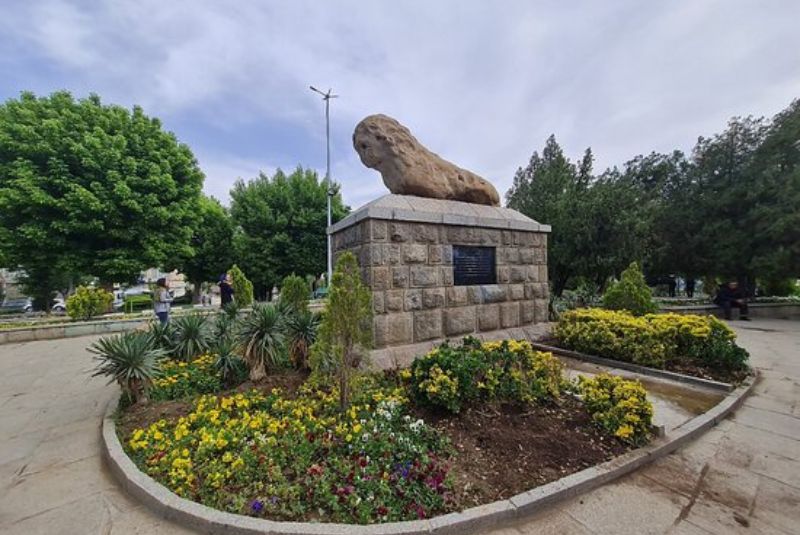
The Stone Lion of Hamedan is a unique example of Achaemenid stone carving art, reflecting the skill and artistry of ancient Persian craftsmen. The lion, a powerful symbol in Achaemenid culture, represents strength and majesty, and this is captured in the lion's forward-facing stance, exuding a sense of power and authority.
Crafted with remarkable precision, the lion’s body details, such as its muscles, mane, and tail, are intricately carved, showcasing the high level of skill possessed by the stonemasons of the time.
The open mouth of the lion, as if in a roar, adds to the statue's dynamic and imposing presence. Beneath its paws, floral and leaf patterns are delicately etched, adding a decorative element to the sculpture. The Stone Lion stands 1.2 meters tall, 2.5 meters long, and 1.5 meters wide, carved from brown stone.

Originally, the statue was placed atop the western gate of the ancient city of Hegmataneh, indicating its significance not only as a symbol of power but also as an important political and religious artifact. The location at the city gate also suggests that it served as a guardian of the city.
Over the centuries, the statue has suffered damage, with one of the lions being completely destroyed and the other severely damaged. It wasn’t until 1949 that the statue was restored to its current position by the renowned architect Hooshang Seyhoun, who also designed the Avicenna Mausoleum.
Today, despite its history of damage and neglect, the Stone Lion of Hamedan remains a significant cultural and historical monument, admired for its architectural beauty and symbolic importance as a protector of the city.
Stone Lion Statue in Hamadan Location
The Stone Lion Statue is located in Hamedan, Iran, at Sang-e Shir Square. This historic site is easily accessible and situated in a prominent area of the city.
How to Get to the Stone Lion Statue in Hamedan
To visit the Stone Lion Statue in Hamedan, you have two main options: public transportation or driving your own vehicle.
- Public Transportation: If you choose to travel by bus, you can book your ticket online. Upon arrival in Hamedan, use local buses or shared taxis to reach Sang-e-Shir Square, where the statue is located.
- Private Vehicle: For those driving, head towards Motahari Boulevard. Continue on to Ibn Sina Street, where you will find the Stone Lion Statue. This route offers convenient access for those traveling by car.
Ticket Price
Visitors can enjoy exploring the statue and its surroundings free of charge. The recommended time to fully appreciate this attraction is between 1 to 2 hours.
Tourist Attractions Near the Stone Lion Statue in Hamedan
The Stone Lion Statue in Hamedan is located near the city center, making it an ideal starting point for exploring the rich history and culture of the area. After visiting this iconic monument, there are several nearby attractions that offer a deeper insight into Hamedan's heritage. Here’s a guide to some of the must-see sites near the Stone Lion Statue:
1. Hegmataneh
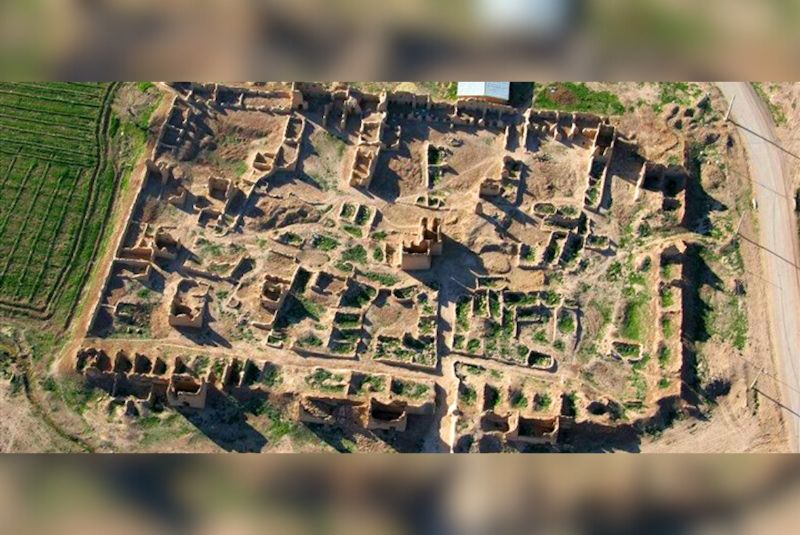
Located just 3.8 kilometers from the Stone Lion Statue, Hegmataneh is an ancient city covering 40 hectares. Built around 3,000 years ago by the first king of the Medes, Hegmataneh was once a thriving city that played a significant role during the Median, Achaemenid, and Parthian eras.

The site features ancient buildings, such as the Gregory Stephan Church, the Church of Saint Mary, and the Hegmataneh Cemetery. Visitors can explore these historical structures and see artifacts like pottery, weapons, and ancient gravestones, as well as the remains of a sophisticated water supply network.
2. Ibn Sina Observatory
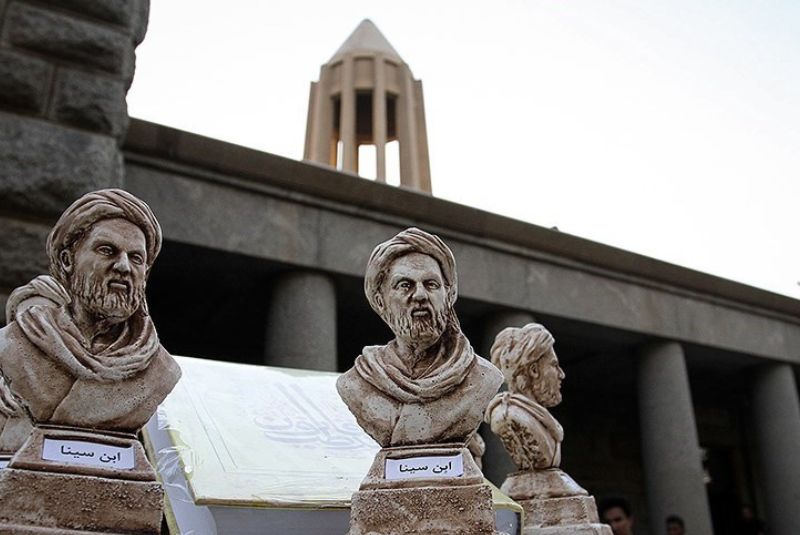
Situated on Haj Enayat Hill, the Ibn Sina Observatory is another fascinating attraction near the Stone Lion Statue. Established in 2003 by the Hamedan Municipality, this observatory is a haven for astronomy enthusiasts.
Equipped with advanced telescopes and a planetarium, visitors can enjoy simulated night skies and observe galaxies, stars, and celestial bodies. The observatory's strategic location makes it a perfect spot for stargazing, offering a unique experience for those interested in the wonders of the universe.
3. Mausoleum of Avicenna
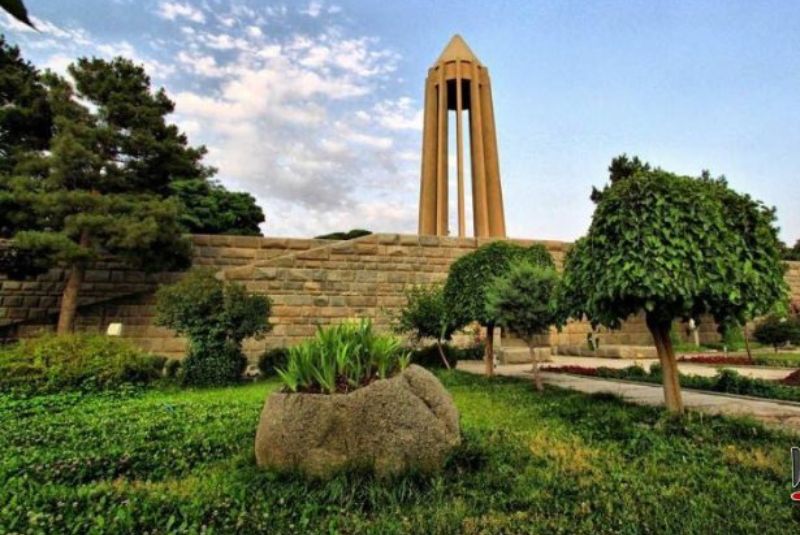
Only 2 kilometers from the Stone Lion Statue, the Mausoleum of Avicenna (Bu Ali Sina) is a significant cultural landmark. This 12-columned mausoleum, located in a lush, green square named after the famous physician, is a tribute to one of Iran’s greatest minds.
Surrounded by ancient plane trees and a traditional Persian garden, the mausoleum also houses a museum that displays coins, pottery, and medicinal herbs, giving visitors a glimpse into the life and contributions of Avicenna.
4. Tomb of Esther and Mordechai
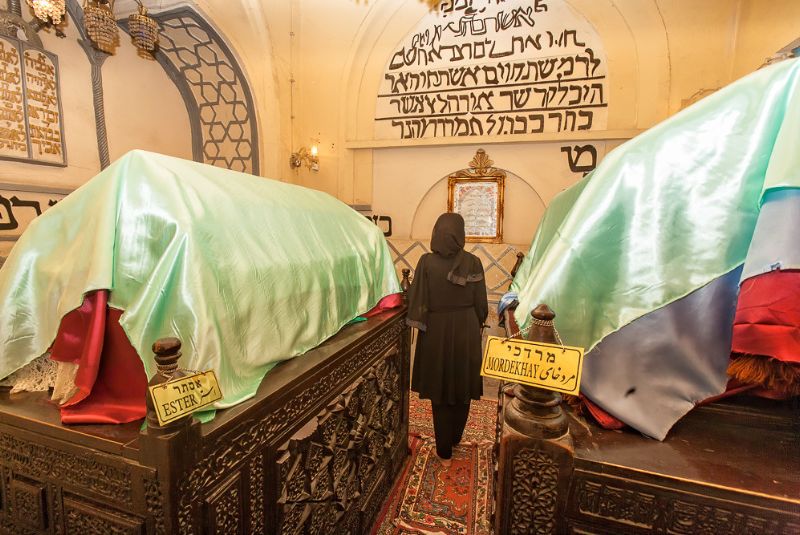
Approximately 3.7 kilometers from the Stone Lion Statue lies the Tomb of Esther and Mordechai, a site of great religious significance for Jews worldwide. The tomb is dedicated to Esther, the Jewish queen of King Xerxes, and her cousin Mordechai, who played a crucial role in saving the Jewish people from persecution.
The site is revered as a symbol of Jewish survival and is comparable in importance to Jerusalem. The tomb’s historical and spiritual significance makes it a fascinating destination for those interested in religious history.
5. Ghorban Tower
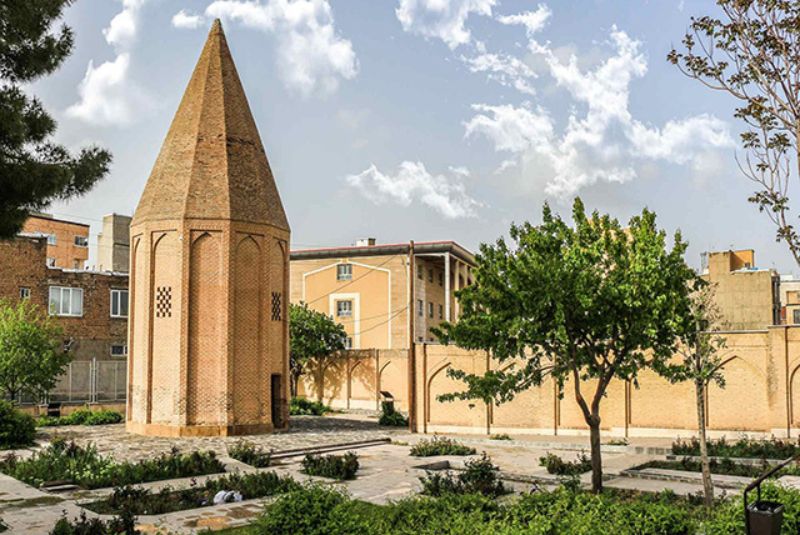
Ghorban Tower, located just 1.4 kilometers from the Stone Lion Statue, is a simple yet historically rich structure dating back over 800 years. The tower, found between Chahar Bagh Madani and Taleghani Street, is believed to be the resting place of scholars like Abul-Ala Hamedani and several Seljuk rulers.
The tower’s name is derived from a man named Ghorban, who, according to legend, protected the people of Hamedan by using the tower as a shelter during an Afghan rebellion.
6. Alavian Dome
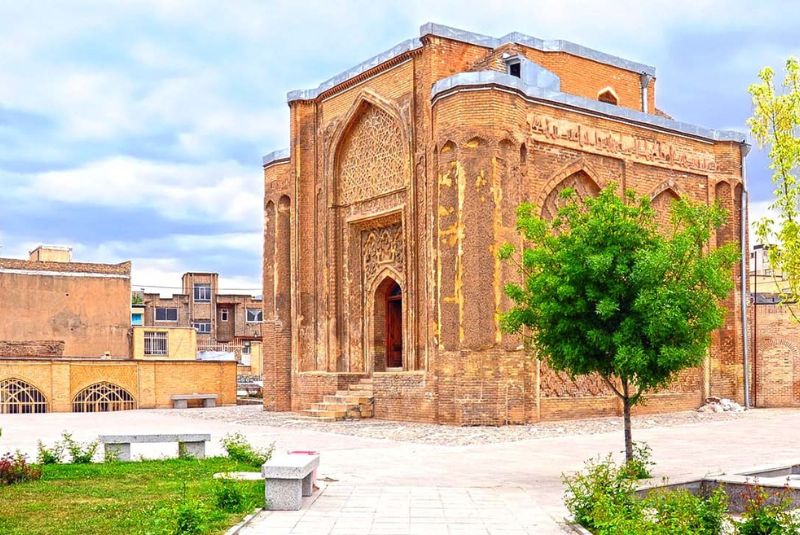
The Alavian Dome, a relic from the Seljuk era, is another nearby historical site worth visiting. Located close to the Stone Lion Statue, this structure is known for its intricate stucco work and Islamic architecture. It is one of the finest examples of Seljuk artistry and serves as a mausoleum for a prominent family from that period.
7. Hamedan Museum
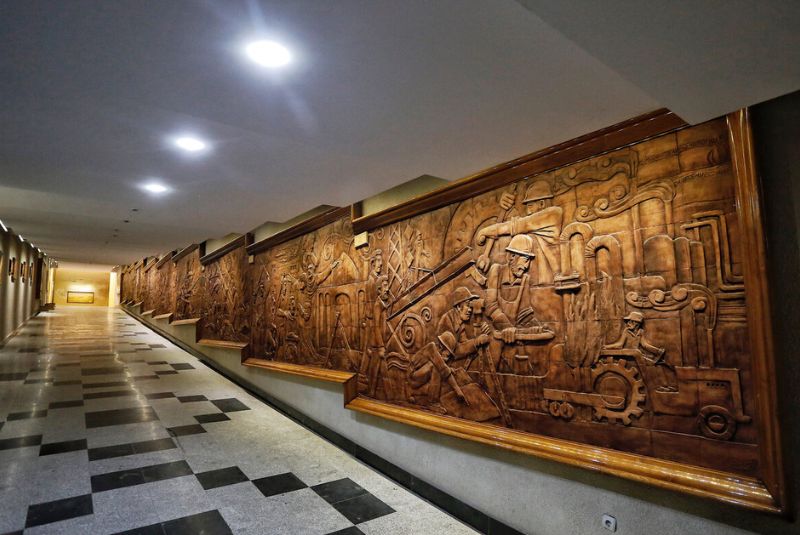
A visit to Hamedan Museum offers an excellent opportunity to delve deeper into the region’s history and culture. Located near the Stone Lion Statue, this museum features a wide array of artifacts, including ancient coins, pottery, and tools that depict the rich heritage of Hamedan. It’s a must-visit for history buffs who want to learn more about the city’s past.
8. Hamedan Traditional Bazaar
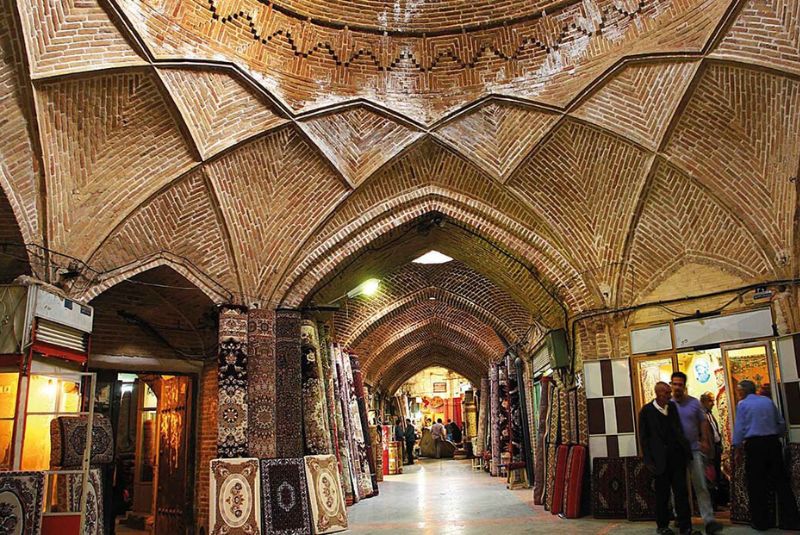
Just a short walk from the Stone Lion Statue, the Hamedan Traditional Bazaar is one of Iran’s oldest markets. Here, visitors can purchase local handicrafts, traditional clothing, and souvenirs. The bazaar’s vibrant atmosphere and architectural charm make it a delightful place to explore and shop.
9. Tiznak House
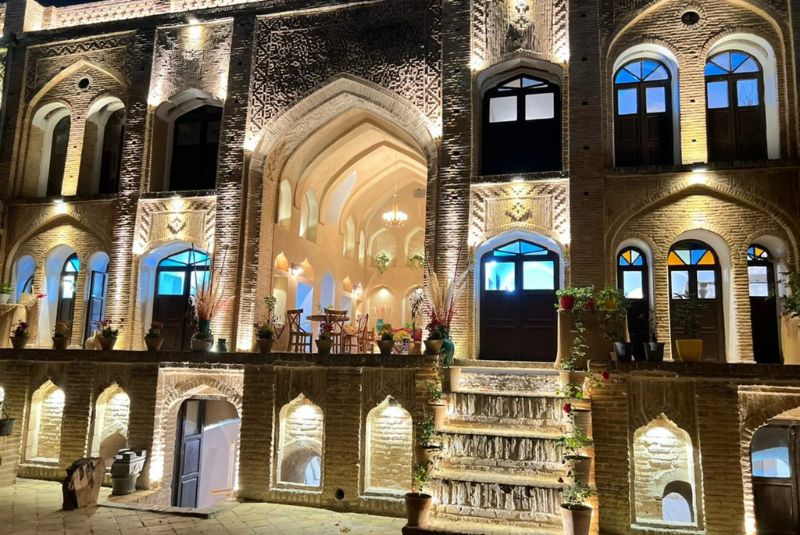
Tiznak House, a historical building from the Qajar era, is now a traditional restaurant and hotel. This beautifully preserved house features traditional Iranian architecture, including a central courtyard, a pool, and a windcatcher. It’s an ideal spot to relax and enjoy local cuisine after a day of sightseeing.
10. Hegmataneh Hill
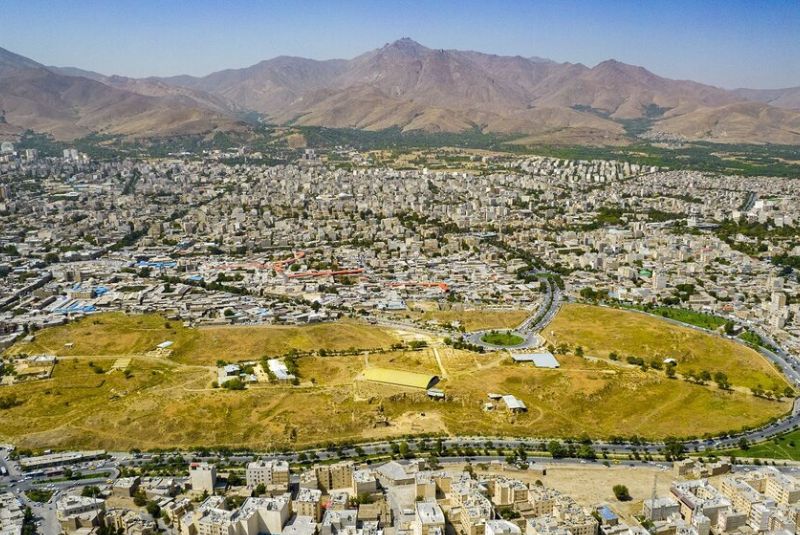
Lastly, the Hegmataneh Hill, once the capital of the Medes and the Achaemenid Empire, is a short distance from the Stone Lion Statue. Visitors can explore the remains of ancient palaces, temples, and gates, providing a fascinating look into the region’s storied past.
Restaurants Near the Stone Lion Statue in Hamedan
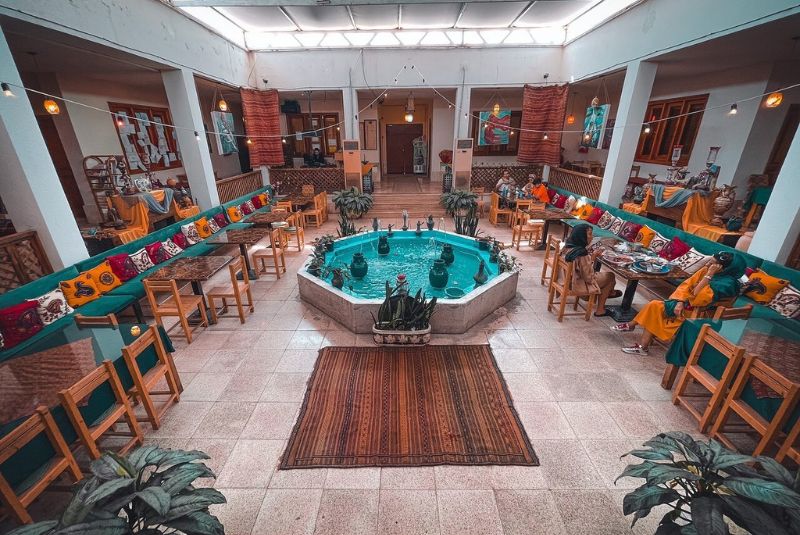
After exploring the Stone Lion Statue in Hamedan, you might want to enjoy a meal or a drink. Several restaurants and cafes are conveniently located nearby, each offering unique experiences:
- Iran Zamin Traditional Restaurant: Just 100 meters away, offering traditional Iranian cuisine.
- Eskimo Cafe: Located 600 meters away, known for its cozy atmosphere.
- Babak Cafe: About 800 meters from the statue, popular for its laid-back vibe.
- Gata Pastry Cafe: 1 kilometer away, a great spot for sweets and coffee.
- Karun Fast Food: Located near Sang-e-Shir Square, ideal for quick bites.
- Shir-e-Sangi Restaurant: Also near the square, offering a variety of local dishes.
Hotels Near the Stone Lion Statue in Hamedan
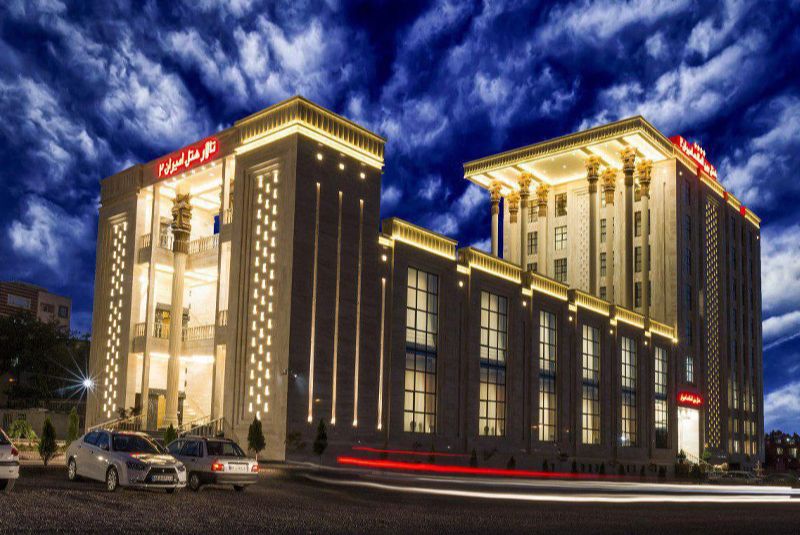
For a comfortable stay near the Stone Lion Statue, there are several hotels within a short distance, catering to various budgets and preferences:
- Amiran 1 Hotel: Located 2 kilometers away, offering modern amenities.
- Baba Taher Hotel: About 3 kilometers from the statue, known for its traditional charm.
- Bouali Hotel: Just 1 kilometer away, providing a blend of comfort and convenience.
- Vandik Hotel: Situated 3.5 kilometers away, offering a quiet retreat.
- Khatam Hotel: Located 4.5 kilometers from the statue, known for its hospitality.
- Safir Apartment Hotel: 5 kilometers away, ideal for longer stays.
Bottom Line
The Stone Lion Statue in Hamedan is like a single-piece museum, capturing stories from ancient history. In this blog, we've provided a brief history of the statue, highlighted key attractions nearby, and shared tips for visiting.
Additionally, we've recommended hotels, cafes, and restaurants to make your trip to Hamedan and the Stone Lion Statue more enjoyable. Whether you're exploring the area's rich history or simply looking to relax, this guide will help you make the most of your visit.
Share your story!
Comment below and let us know about your Experience.
Your story inspires others!


Comment
Leave a Comment